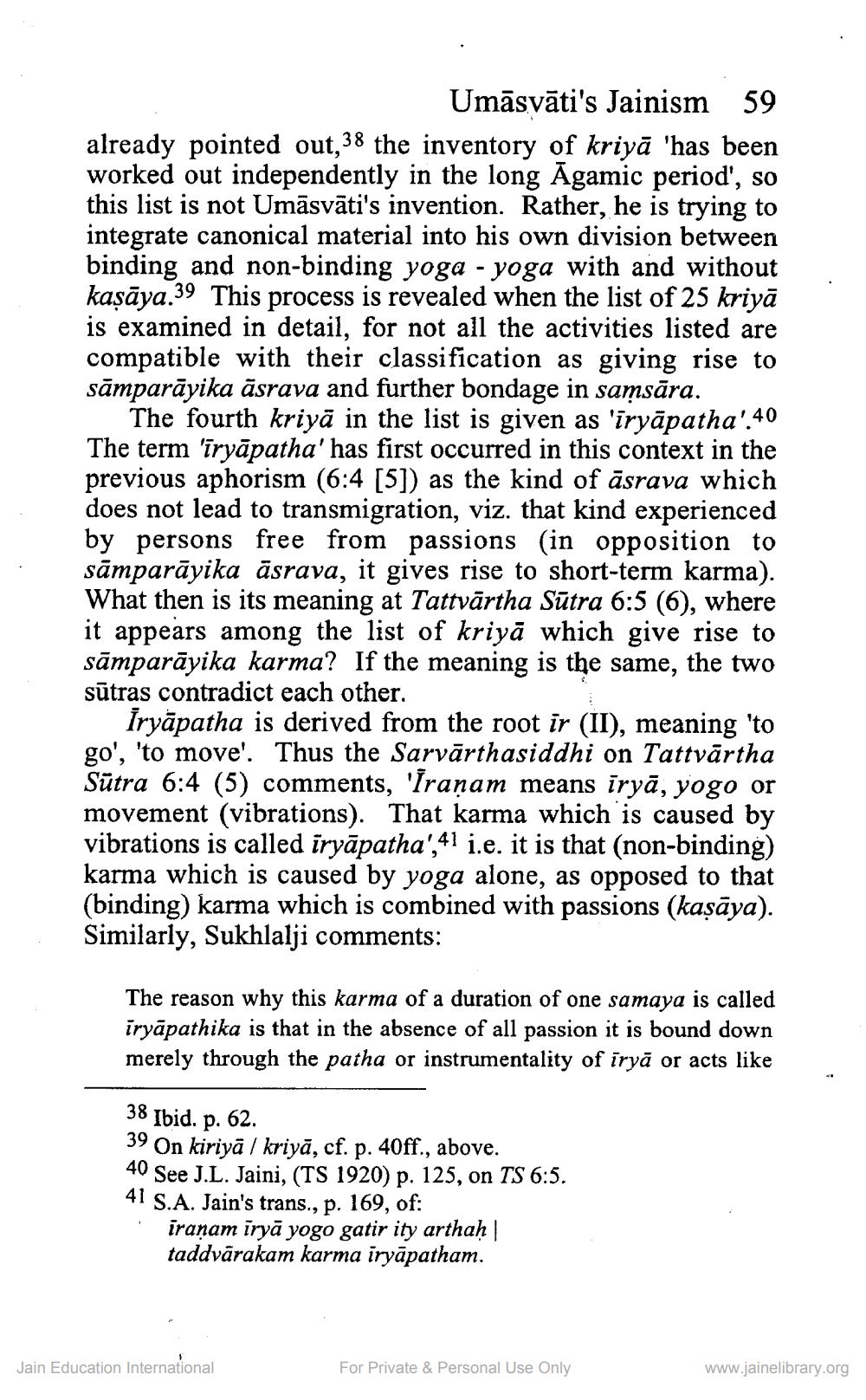________________
Umāsvāti's Jainism 59 already pointed out,38 the inventory of kriyā 'has been worked out independently in the long Agamic period', so this list is not Umāsväti's invention. Rather, he is trying to integrate canonical material into his own division between binding and non-binding yoga - yoga with and without kaṣāya.39 This process is revealed when the list of 25 kriyā is examined in detail, for not all the activities listed are compatible with their classification as giving rise to sāmparāyika āsrava and further bondage in samsāra.
The fourth kriya in the list is given as 'īryāpatha'.40 The term 'īryāpatha' has first occurred in this context in the previous aphorism (6:4 [5]) as the kind of asrava which does not lead to transmigration, viz. that kind experienced by persons free from passions (in opposition to sāmparāyika āsrava, it gives rise to short-term karma). What then is its meaning at Tattvārtha Sūtra 6:5 (6), where it appears among the list of kriya which give rise to sāmparāyika karma? If the meaning is the same, the two sūtras contradict each other.
İryapatha is derived from the root ir (II), meaning 'to go', 'to move'. Thus the Sarvārthasiddhi on Tattvärtha Sūtra 6:4 (5) comments, 'Iraṇam means iryā, yogo or movement (vibrations). That karma which is caused by vibrations is called iryapatha',41 i.e. it is that (non-binding) karma which is caused by yoga alone, as opposed to that (binding) karma which is combined with passions (kaṣāya). Similarly, Sukhlalji comments:
The reason why this karma of a duration of one samaya is called iryāpathika is that in the absence of all passion it is bound down merely through the patha or instrumentality of īryā or acts like
38 Ibid. p. 62.
39 On kiriyā / kriya, cf. p. 40ff., above.
40 See J.L. Jaini, (TS 1920) p. 125, on TS 6:5. S.A. Jain's trans., p. 169, of:
41
iraṇam īrya yogo gatir ity arthaḥ | taddvārakam karma iryāpatham.
Jain Education International
For Private & Personal Use Only
www.jainelibrary.org




